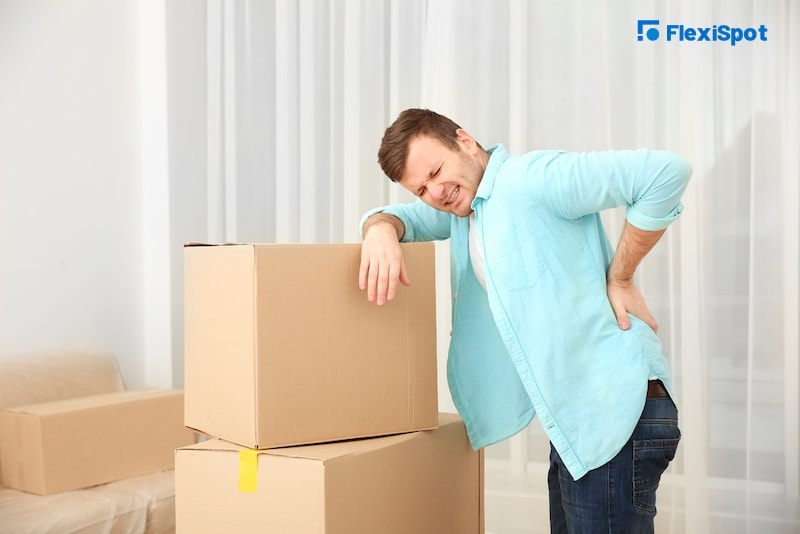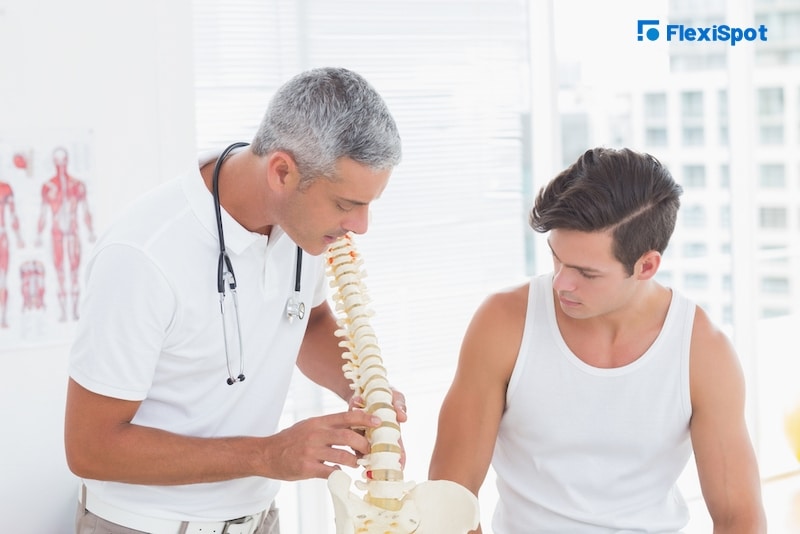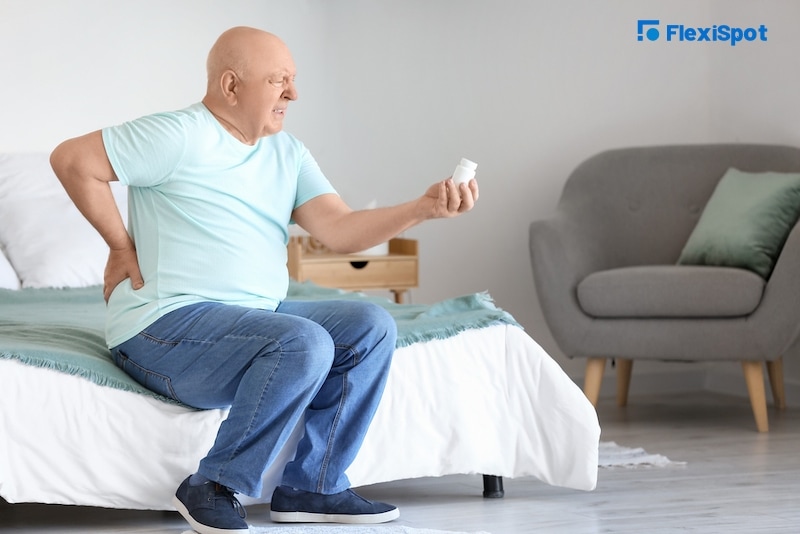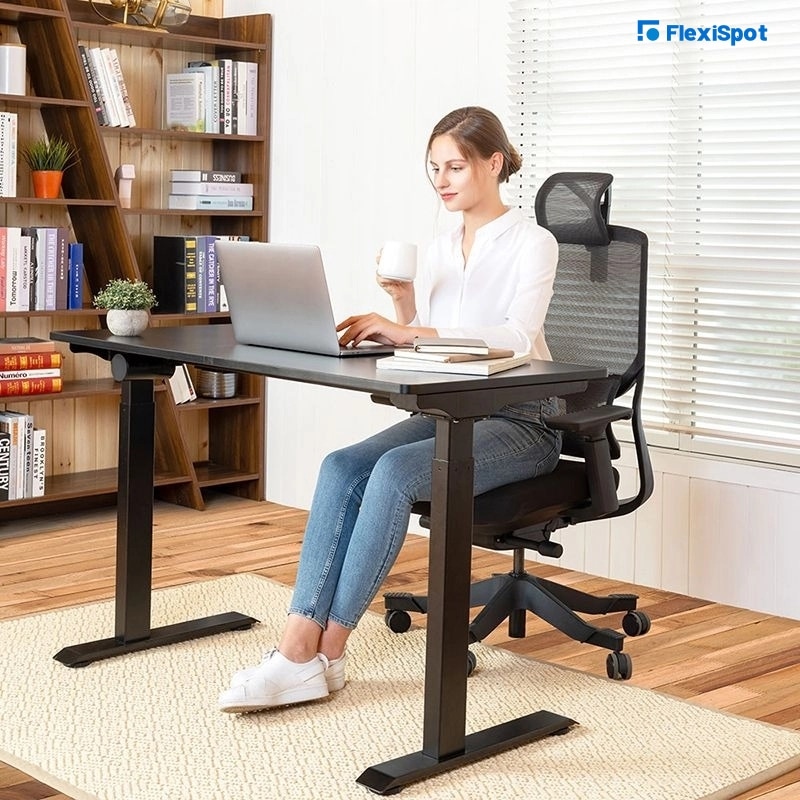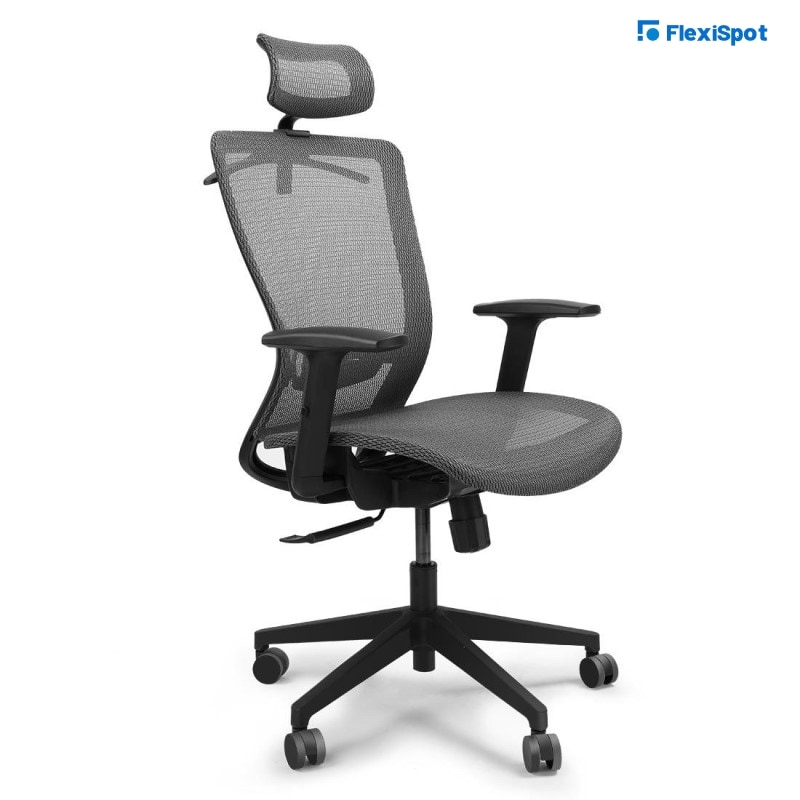Your lumbar region (low back) is the area of your back that starts below your ribcage. Almost everyone has experienced pain in their lumbar region at some point in their life. It is one of the top causes of missed work and doctor visits in the United States. Luckily, lower back pain often gets better on its own with time. However, when it doesn't, several effective treatments can help.
This article will talk about some common causes of lower back pain. We will also shed light on some preventive measures and discuss how an ergonomic chair for back pain can help you overcome this condition.
10 Common Causes of Lower Back Pain
The causes of lower back pain are classified as mechanical, organic, and idiopathic. Mechanical lower back pain is pain triggered by spinal movement. It involves spinal structures, such as the intervertebral discs, facet joints, vertebrae, muscles, ligaments, and soft tissues. On the other hand, organic lower back pain results from diseases like spinal tumors, whereas idiopathic refers to an unknown cause of lower back pain.
Here are 10 things your doctor might look for or rule out when you visit them for lower back pain:
1. Sprains and Strains
Sprains and strains on ligaments, muscles, and tendons are the most common causes of lower back pain. In most cases, they are related to the overuse of these spinal structures. Twisting or pulling of these spinal structures can result in a sprain or strain. It can also be caused by improper lifting.
2. Sciatica
Sciatica is the pain that results from a pinched or irritated sciatic nerve. The sciatic nerve is the nerve that runs down your lower back through your hips and down each leg. In layman's terms, sciatica is the pain that travels down the legs from the lower back.
3. Degenerative Disc Disease
While this condition sounds worrying, it just means your damaged disc is causing lower back pain. Our discs become thinner and flatter with age because of wear and tear. This causes them to lose their ability to cushion our vertebrae. Damaged discs are more likely to tear.
4. Herniated Disc
The protective covers on intervertebral discs can tear with time. The soft inner disc tissue can push through the outer layer when this happens. A disc that slips out of its place is known as a herniated disc. The herniation presses on nerve roots and leads to symptoms such as lower back pain, tingling, numbness, or even weakness.
5. Spondylolisthesis
Spondylolisthesis is a condition in which your vertebra slides forward out of position, disrupts your spine's alignment, and compresses your nerve roots. This condition mostly occurs in the lumbar region but can happen anywhere along the spine. Disc degeneration and fractured vertebra are the two most common reasons for slippage.
6. Spinal Stenosis
Spinal stenosis refers to the narrowing of the spaces inside your spine. This condition occurs mostly as a result of a herniated disc. However, in some cases, it is caused by bone spurs due to spinal osteoarthritis. Spinal stenosis causes painful pressure on your spinal nerves. It can occur in both the upper and lumbar spine.
7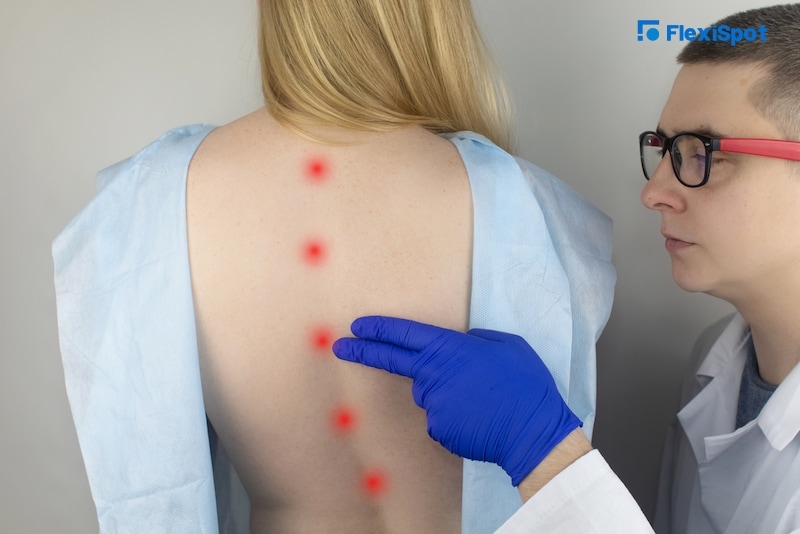
. Abnormal Spinal Curvature
If you look at a normal spine from the side, you'll notice it looks like a slightly curved "S." Abnormal spine curves include the following conditions:
Lordosis: The lumbar spine is curved inwards just above the hips.
Kyphosis: The spine is unusually rounded towards the upper back.
Scoliosis: The spine curves in a C-shape from side to side.
8. Arthritis
There are more than a hundred different types of arthritis, and many of them are responsible for causing lower back pain due to inflammation, weakness and wear and tear. The most common types of arthritis that cause pain in the lumbar region include osteoarthritis, rheumatoid arthritis, and ankylosing spondylitis.
9. Osteoporosis
When your bones start losing mass faster than your body can replace, it makes them brittle. Brittle bones are easy to fracture. These fractures are very common in the spine and are called vertebral compression fractures. Both men and women lose bone mass with age, but post-menopausal women lose it much quicker, so they remain at a higher risk for osteoporosis.
10. Spinal Tumors
Lower back pain is also a result of spinal tumors. When cells divide and multiply, they result in tumors. Both malignant and benign tumors can cause lower back pain. They can either originate in your spine or spread there from somewhere else in your body.
Home Remedies to Treat Lower Back Pain
If you haven't had any major injury caused by accidents or falls, you probably don't need to rush to a doctor for lower back pain. Try these simple self-care strategies first:
1. Avoid Bed Rest
Whenever people suffer from lower back pain, they think complete bed rest will relieve the pain. However, many clinical studies have found that patients who resort to bed actually experience more pain and recover more slowly than those who stay active.
2. Use Ice and/or Heat
Using ice or cold packs for 20 minutes at a time can help reduce pain and swelling in your lumbar region. Always wrap the pack in a soft cloth or thin towel before using it on your lower back so you don't injure your skin. You can also try using a heating pad or taking a warm bath to ease the pain. We recommend you use ice in the first two days, then try a combination of ice and heat.
3. Try Over-The-Counter (OTC) Remedies
Using OTC pain relievers, such as ibuprofen and naproxen, can ease your lower back pain. OTC gels, creams, patches, or sprays also relieve pain when applied to the skin. They stimulate nerves in the skin and provide warmth or cold to dull the pain sensation.
How to Prevent Lower Back Pain
Rather than treating lower back pain later after it occurs, why not avoid or prevent it altogether by improving your physical condition?
To keep your back healthy and strong, you should:
Exercise regularly. Low-impact exercises like walking, aerobic activities, and swimming that do not strain or jolt your back muscles can increase the strength and endurance in your muscles, allowing them to function better.
Form muscle strength and flexibility. Try abdominal and back muscle exercises to strengthen your core. This will condition your muscles to work together to support your back.
Maintain a healthy weight. Being overweight can put a strain on your back muscles.
Quit smoking. Smoking can increase your risk of lumbar pain. The more cigarettes you smoke per day, the greater at risk you will be, so try to cut down.
If possible, avoid movements that strain your back muscles. Stand smart and avoid slouching. Maintain a balanced pelvic position. If your job demands you to stand for long periods, at least place one foot on a low footstool to take some pressure off your lower back.
If your job requires you to sit for extended periods, always choose an ergonomic office chair that provides lumbar support and comes with armrests and a swivel base. Always keep your knees at your hip level. After every 30 minutes, change your position.
To prevent lower back pain, avoid heavy lifting. However, if you must lift something heavy, use your legs! Keep your back straight and only bend at the knees. Hold the heavyweight close to your body. It is always best to ask for help if an object is extremely heavy.
How Does an Ergonomic Office Chair Help with Lower Back Pain?
An ergonomic office chair is designed to support your posture and reduce stress on your body. Such chairs come with backs that extend fully from your shoulders. They also have adjustable armrests to support your elbows and forearms. This allows you to easily use your mouse, keyboard, and other gadgets without causing muscle fatigue in your arms and shoulders.
Sitting in an ergonomic chair that provides lumbar support encourages you to sit more erect. You can reach everything on your work desk without leaning forward and putting additional strain on your lower back.
Ergonomic chairs from FlexiSpot are made with higher quality materials than traditional office chairs. They come with additional lumbar support built into the design and adjustable arm and headrests. If you have short legs, you can always lower the chair and slide the seat forward to shorten its depth.
The OC3B Ergonomic Office Chair from FlexiSpot is one of the best ergonomic office chairs in the market. It comes with a position tiltation locking mechanism that makes it possible to tilt the chair whenever you want to rest your back. It also has an adjustable lifting headrest to help your release your neck and a breathable mesh back that provides excellent lumbar support to release pressure from your body at home and work.
Get your ergonomic chair for back pain today! Click here.
